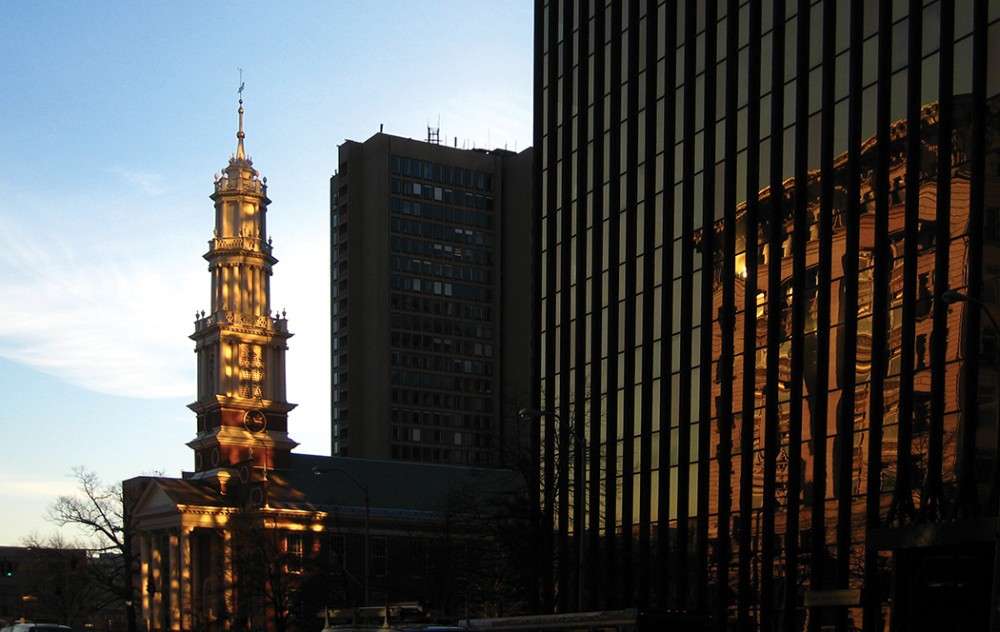Learning to love our church’s (expensive) steeple
At first I resented the costly repairs. Then I took a closer look.

I arrived as transitional minister at a church in the midst of multiple projects put on hold when the previous pastor left, including a $2 million construction project to repair a crumbling steeple and the capital campaign that went along with it. The main church building sits in the center of Hartford within sight of the state capitol, surrounded by skyscrapers with businesses and apartments, as well as homeless shelters and soup kitchens. In 1806, when the current building was erected, the steeple was the highest point in the city. Now it peeks out between larger buildings. An expensive anachronism, I thought, the first time I saw it.
With one glorious five-year exception, my entire 36 years of ministry has been spent with churches in old buildings, though this one is the oldest. I keep telling God I am done with buildings. I am tired of the restrictions of pews, the endless repair projects, and, most of all, the tremendous amount of money spent on buildings, money which, I have always thought, could do more good elsewhere in ministry.
Still, I had been called to serve this congregation, which meant called to handle the construction project and support a capital campaign. Our church had been fortunate enough to receive a matching grant from Partners for Sacred Places, a national historic preservation organization. Very soon after my arrival, I spoke with our Partners representatives, who encouraged both me and the congregation to explore how these buildings might be an asset to us, to the city, and to God. Skeptical, but keeping an open mind despite the mounting bills, I made a pledge to the capital campaign and set out to summon some enthusiasm to do my job to support this costly and, to my mind, probably wasteful project.





